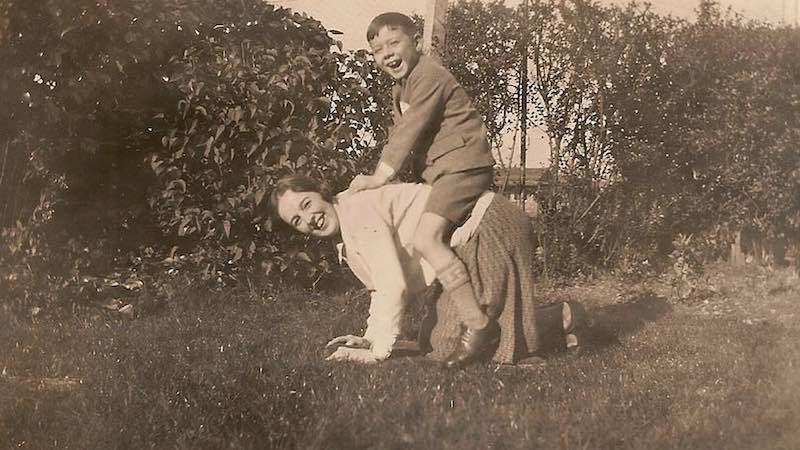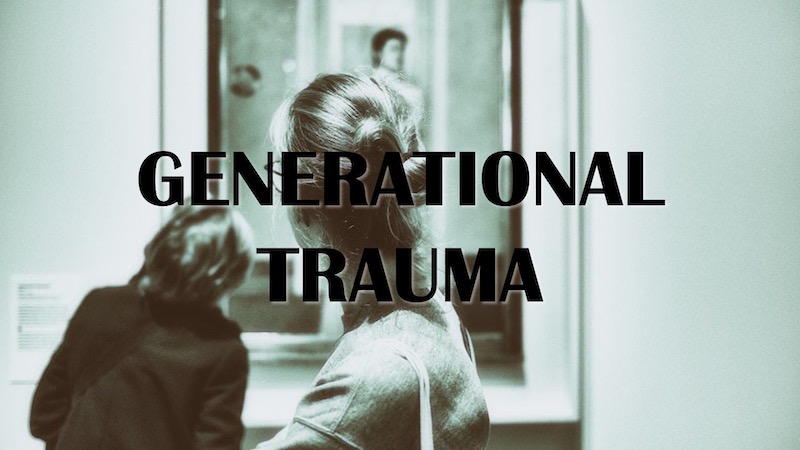12 Principles for clearing generational trauma
- 17 September 2022
- Posted by: Michael H Hallett
- Category: Emotional principles , Generational trauma ,

Over the course of recognising and releasing my own generational trauma, I’ve noticed various principles. These principles are repeatable, consistent, and constant. You can rely on them as much as any scientific principle. I’m convinced there is science behind them, we just haven’t deconstructed it yet.
In Living with ghosts, I’ve documented some of my experiences. Here I’ve distilled those experiences into a round dozen generational trauma principles.
Principles of generational trauma
Generational trauma is created when a traumatic event occurs that the person experiencing it cannot process. The trauma is simply an accumulation or backlog of experience that was too painful to be processed—i.e., fully felt—and released when it happened.
Dealing with generational shame is a difficult, painful, and—quite frankly—weird business. These distorted energies act as if they have a life of their own.
When disrupted, I’ve experienced powerful emotional reactions with a sense of the paranormal about them. However, when understood in the light of generational shame it’s clear these are simply very old energies being released from the unconscious.
If you begin the hero’s journey of uncovering generational trauma you too will find these principles can be relied on.
Principle #1: Start digging, information will come to you
If you do nothing, nothing will happen. If you start digging, clues will come to you—sometimes quite mysteriously. Letters and emails out-of-the-blue from distant family members with an interest in genealogy. Strange clues landing in your lap in mysterious circumstances. Unexpected visits to places where traumatic experiences happened. Think of family trauma as a splinter working its way towards the surface.
Principle #2: Buried traumas explode upon discovery
Anything compressed explodes upon release. Generational trauma is no different. It is old, dense, compressed emotional pain buried deep in your DNA. When you step on a ‘trauma landmine’ it can blow you to pieces. Well done, you’ve made progress. The deeper the trauma, the bigger the mess, the more pain, the greater the healing. Get used to it.
Principle #3: It’s not yours, but it is your responsibility
It’s like broken glass outside a school. It doesn’t matter who put it there, it just needs to be cleaned up. If you’ve stumbled upon it, then that’s you.
Emotional responsibility is a concept that’s only just beginning to dawn on us. Accepting responsibility for our family’s past is one of generational trauma’s core healing principles.
Principle #4: These energies don’t want to be disturbed
This principle is the opposite of the first principle, start digging and information will come to you. Both are true.
When dealing with generational trauma you’re dealing with old, damaged, compressed energies that just want to be left alone. As you approach them, they will seek to push you away. Obstacles will materialise in your path. Delays will happen. Weirdness abounds.
Principle #5: Expect the unexpected
When you break into these energies—which exist as pockets of repressed energy within you—they can be physically, mentally, and emotionally destabilising. Expect a bumpy ride.
But ‘unexpected’ doesn’t necessarily mean ‘bad’. You may equally encounter kindness, powerful synchronicities, and find new friends.
Principle #6: These energies want to be healed
The energies of generational trauma are very old, very dense, very painful—and have a life of their own. They want to be left alone—yet they also need to be healed.
Because of this paradox, you can find yourself caught in a push-pull dance between the desire for change, and resistance to it. Working with these energies can feel like dealing with the supernatural.
Principle #7: Grace descends when you allow it
The six principles I’ve enumerated so far suggest that clearing generational trauma, is a raw, ragged, unpredictable, and bruising experience. It is. Yet grace also rears its beautiful head, on a consistent basis.
Grace isn’t elusive. Create the preconditions for grace and it must materialise. Accept responsibility (Principle #3) and practice non-judgment (see Principle #11), and you can rely on it softening the speed bumps of your journey.
Principle #8: Things happen just in time
My background is in manufacturing processes, and one of the principles there is called Just In Time—you only make something right before you need it. Just In Time applies here too. Sudden developments will happen at the last moment, no sooner. Generally, you won’t see those moments when you step on a trauma landmine coming.
Afterwards, you’ll wonder how you didn’t see it coming. That’s because it came just in time.
Principle #9: Watch for triggers
Which brings me to another paradoxical principle: watch for triggers.
Triggers are events that activate our buried traumas. We each have different ones. One common trigger is geography. Getting close to where the trauma happened can release the repressed feelings associated with it.
Another trigger might be a name. In her family memoir The Architect of Desire, Suzannah Lessard writes that “mention of my great-grandfather—especially in public, unexpectedly—could jolt my system, disorienting me, blowing out my circuits with a horrible, smoking mixture of pride and shame.”
Or, if you’re dealing with repressed grief, you might find funerals overwhelmingly painful.
Triggers are double-edged swords. They make it easier to access buried feelings, but at the same time they make them stronger. Watch for triggers—but often the only way you find the trigger is by squeezing it.
Principle #10: There is no moral high ground
Here is perhaps the most important principle of all: there is no moral high ground.
Whatever happened, happened. Some of your ancestors found themselves in a situation they couldn’t handle emotionally. Some kind of mess happened. They were all trying to do the best that they could, even if it wasn’t very good at all.
If you think that there was a right and a wrong to whatever happened in the family way back when, you won’t break generational trauma.
You must forgive, regardless.
Principle #11: Where there is trauma there is judgment
Underlying all trauma there is judgment. It is technically impossible for trauma to exist without an event being unconsciously judged as ‘bad’. That judgment is transmitted to future generations. Removing it is the key to resolving generational trauma.
Approach trauma with as little judgment as possible. When trauma flares its ugly head, consciously practice non-judgment. Breathe, accept, release. Rinse and repeat.
Principle #12: Expect positive confirmation
When you release judgment from generational trauma, expect positive change. An emotionally distant family member may suddenly reach out to you. Something stuck in your family dynamics—often for decades—may suddenly release.
Or an altogether more dramatic sign of your family’s improved emotional health might appear. In Living with ghosts, I describe how, only weeks after a particularly deep clearing, I ended up on Antiques Roadshow (one of Britain’s most popular TV shows) talking about family history that had been buried for a century.
I cannot make promises about your own healing journey—except that you will find these principles of generational trauma clearing will become your tried and trusted friends.
Next steps
For further resources on generational trauma, both free and paid, please click on this image.


I found this article Just in Time. Tyty!
Hi Elizabeth, glad you found this information in a timely fashion. It’s amazing how often things happen Just In Time.